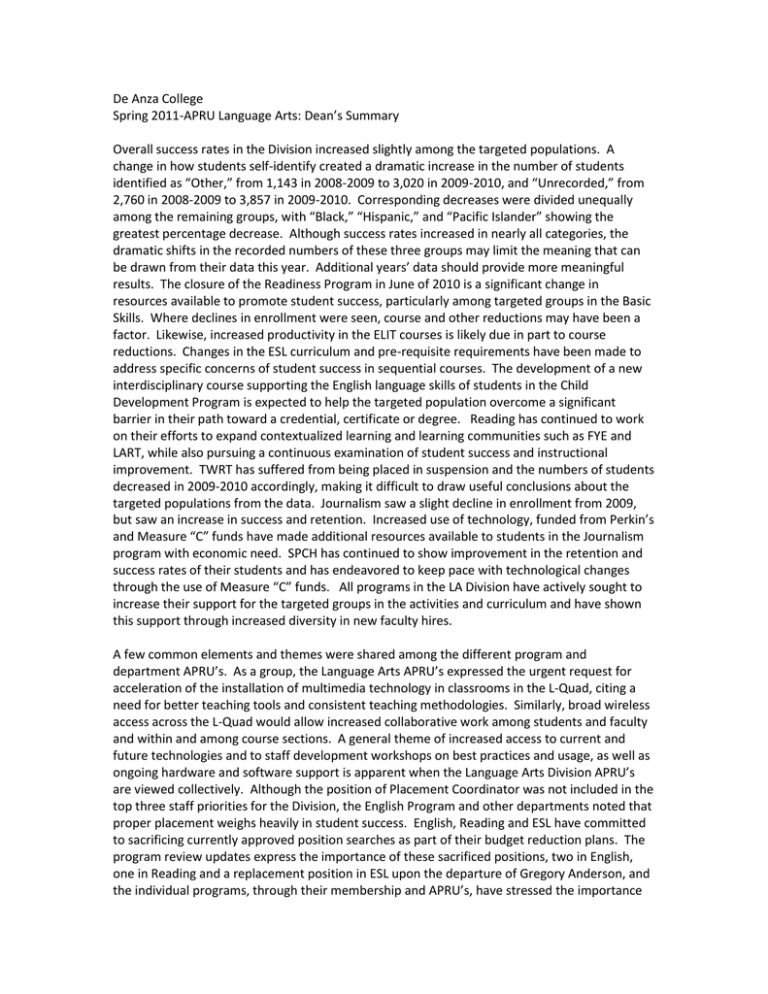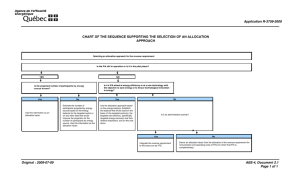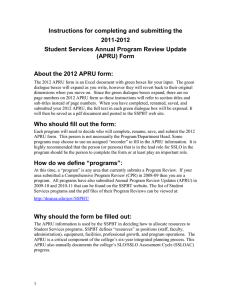De Anza College Spring 2011-APRU Language Arts: Dean’s Summary
advertisement

De Anza College Spring 2011-APRU Language Arts: Dean’s Summary Overall success rates in the Division increased slightly among the targeted populations. A change in how students self-identify created a dramatic increase in the number of students identified as “Other,” from 1,143 in 2008-2009 to 3,020 in 2009-2010, and “Unrecorded,” from 2,760 in 2008-2009 to 3,857 in 2009-2010. Corresponding decreases were divided unequally among the remaining groups, with “Black,” “Hispanic,” and “Pacific Islander” showing the greatest percentage decrease. Although success rates increased in nearly all categories, the dramatic shifts in the recorded numbers of these three groups may limit the meaning that can be drawn from their data this year. Additional years’ data should provide more meaningful results. The closure of the Readiness Program in June of 2010 is a significant change in resources available to promote student success, particularly among targeted groups in the Basic Skills. Where declines in enrollment were seen, course and other reductions may have been a factor. Likewise, increased productivity in the ELIT courses is likely due in part to course reductions. Changes in the ESL curriculum and pre-requisite requirements have been made to address specific concerns of student success in sequential courses. The development of a new interdisciplinary course supporting the English language skills of students in the Child Development Program is expected to help the targeted population overcome a significant barrier in their path toward a credential, certificate or degree. Reading has continued to work on their efforts to expand contextualized learning and learning communities such as FYE and LART, while also pursuing a continuous examination of student success and instructional improvement. TWRT has suffered from being placed in suspension and the numbers of students decreased in 2009-2010 accordingly, making it difficult to draw useful conclusions about the targeted populations from the data. Journalism saw a slight decline in enrollment from 2009, but saw an increase in success and retention. Increased use of technology, funded from Perkin’s and Measure “C” funds have made additional resources available to students in the Journalism program with economic need. SPCH has continued to show improvement in the retention and success rates of their students and has endeavored to keep pace with technological changes through the use of Measure “C” funds. All programs in the LA Division have actively sought to increase their support for the targeted groups in the activities and curriculum and have shown this support through increased diversity in new faculty hires. A few common elements and themes were shared among the different program and department APRU’s. As a group, the Language Arts APRU’s expressed the urgent request for acceleration of the installation of multimedia technology in classrooms in the L-Quad, citing a need for better teaching tools and consistent teaching methodologies. Similarly, broad wireless access across the L-Quad would allow increased collaborative work among students and faculty and within and among course sections. A general theme of increased access to current and future technologies and to staff development workshops on best practices and usage, as well as ongoing hardware and software support is apparent when the Language Arts Division APRU’s are viewed collectively. Although the position of Placement Coordinator was not included in the top three staff priorities for the Division, the English Program and other departments noted that proper placement weighs heavily in student success. English, Reading and ESL have committed to sacrificing currently approved position searches as part of their budget reduction plans. The program review updates express the importance of these sacrificed positions, two in English, one in Reading and a replacement position in ESL upon the departure of Gregory Anderson, and the individual programs, through their membership and APRU’s, have stressed the importance of noting that the positions the sacrifice of these positions in the planned budget reductions is done with the understanding that they be made a priority to be restored the next time the College is able to search for new hires.





